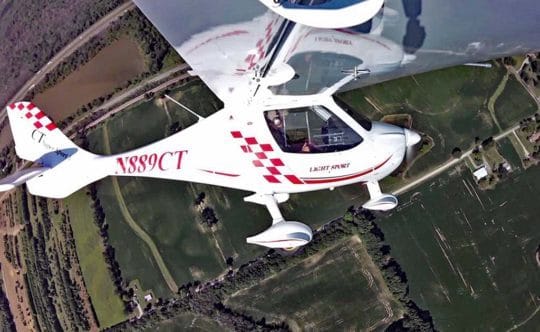How does one LSA brand rise and stay above others?
Many reasons can be introduced; all possibly valid. However, it doesn’t hurt when a brand has a distributor that itself rises above all the rest. In case you think I am torturing the “above all the rest” metaphor, well, you may not have met the Gutmann team in the flesh. Once you do, I think you’ll see my point very clearly.
Looking Up to Tom & Tom
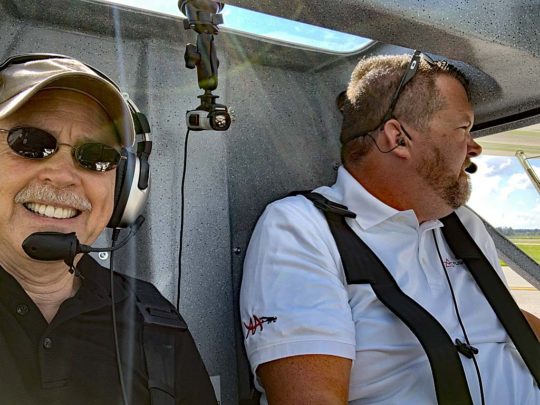
My tongue-in-cheek subtitle comes from the perspective of an average-sized pilot talking to the father and son team of Tom Sr. and Tom Jr. Gutmann. These gentle giants stand so tall above me that even Tom Cruise’s acting box would not let me look this pair eye-to-eye.
Indeed, it is a tribute to the spaciousness of CT-series interiors that both these beefy fellows fit inside comfortably. Don’t try that in a Cessna 150 (or even a 172)!
Flight Design’s CT-series is roomy inside, 49 inches wide, a full 10 inches more than a Cessna 172. It also has super visibility. These facts are true of both CTLS, the current flagship of the German producer, and for the newest CT Super Sport, as seen in most of the nearby photos. The image of the two of us in the cockpit clearly shows that Tom Jr. and I have several inches between our shoulders and we were not smashed up against the door to produce this view.
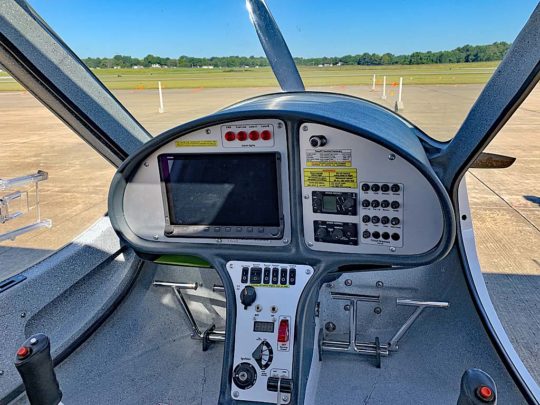
Tom and I flew Super Sport at the Midwest LSA Expo (see video below) where I renewed my enthusiasm over the earlier CTSW model. While it has been a few years since I flew CTSW, I clearly recall it had dashing performance that the more luxurious (read: heavier) CTLS cannot quite match. Super Sport continues that, weighing as it does around 100 pounds less than CTLS and its 1,000 fpm climb rate supports the worth of that weight reduction.
Super Sport is an upgrade from CTSW, however, as it uses three primary elements of the sophisticated CTLS and CTLSi. Super Sport has the wings, entire tailplane, and the main landing gear of CTLS. In my humble opinion, these were smart additions and created a new plane from two prior models.
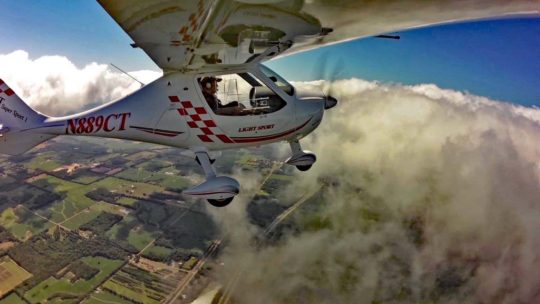
What you don’t get with CT Super Sport is the back window and hat rack cabin space of CTLS. The slight enlargement of the longer, fancier LS does indeed make the cabin feel roomier and you have less space for things you need in the cockpit — though the floor compartments in front of both seats will suffice for most things you may want to access during flight. Both models keep the ample storage area aft of the cabin but you cannot access that while flying.
For this review, Super Sport was equipped with the Rotax 912 iS Sport engine that delivers such wonderful fuel economy. That’s why the tail shows “Super Sport i.”
Airtime for All
Whatever Flight Design offers aviators, one U.S. distributor can always supply. That’s the Gutmann’s Airtime Aviation enterprise, based in Tulsa, Oklahoma.
Airtime Aviation Inc. — also found by the simple, easy-to-remember FlyCT.com — is operated by father and son team of Tom (Senior) and Tom (Junior) Gutmann. Airtime Aviation has delivered more than 200 CT aircraft to customers around the United States.
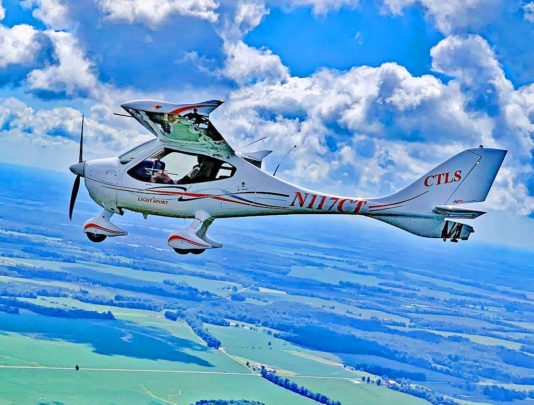
Coordinating closely with Flight Design USA, lead by Tom Peghiny, the Gutmanns are intimately aware of all things Flight Design.
You can engage either Tom by phone call (try: 918-630-5927 or 918-625-5442).
More About Super Sport
The CT-series has long offered several compelling safety attributes.
The “egg-shaped” design offers a protective “safety cell” cabin known in the automotive world as a “crush zone.” Simplisitically, this means forces of an impact are directed around the occupants to protect them.
Since its introduction as a LSA, every CT model has come standard equipped with an emergency airframe parachute. You may never need this capability, but it provides peace of mind for pilot and encourages less-certain passengers to go aloft with you.
A slippery all-carbon fiber exterior allows Super Sport to reach the LSA speed limit of 120 knots. We commonly saw 115 knots at a shade over 75% power yet burned only 4-5 gallons per hour of auto fuel or avgas; you can use either in any mixture, which is true for all 912 engines. The speed figures come from flying at lower altitudes (2,000-3,000 feet AGL). Given its voluminous 34 gallon fuel tanks Super Sport can manage a non-stop flight of more than 1,000 statute miles!
Super Sport comes standard with a single Dynon SkyView screen that can be used in conjunction with an optional autopilot. Air-bulb-adjustable seat backs and cushions aid human comfort as does cabin heat and plenty of fresh-air ventilation.
FEBRUARY 29, 2020 BY DAN JOHNSON

